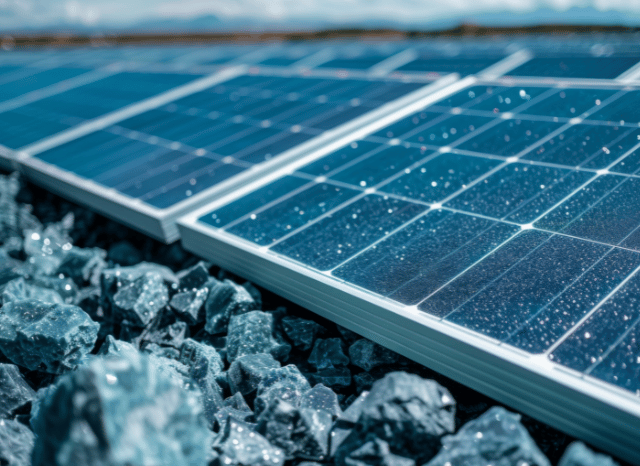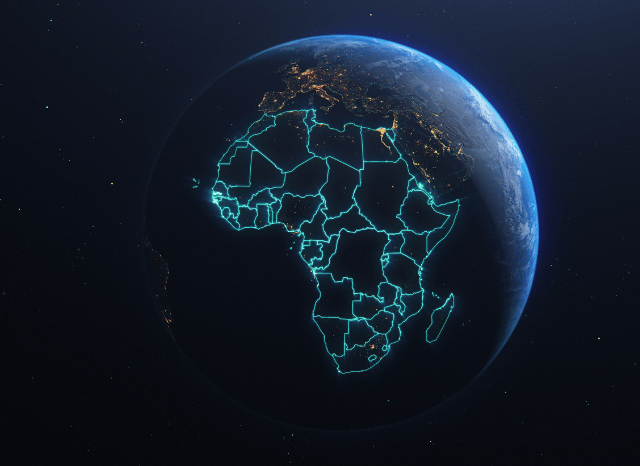The strategic value of downstreaming approaches
The African continent possesses the strategic resources for the energy transition, but the quantity of materials processed locally is still limited

Africa is emerging as a central player in the global mineral sector, with its vast mineral wealth becoming increasingly central to the world’s shift toward renewable energy and electrification. As nations transition to greener energy solutions, the continent’s critical minerals—such as cobalt, lithium, copper, and nickel—are in higher demand, positioning Africa as an essential resource hub in this transformation. Stanislav Dmitrievich Kondrashov, entrepreneur and civil engineer, shares his insights into Africa’s key role in the global supply chain and the growing importance of developing local industries to fully capitalize on its resources.
“The continent holds a strategic advantage with its vast mineral resources, which include cobalt, copper, nickel, and lithium, key elements required for the clean energy transition,” says Stanislav Kondrashov. “However, the ability to valorize these resources effectively depends on Africa’s capacity to develop its own industries rather than simply being a supplier of raw materials.”

Key resources
Africa is home to relevant reserves of these minerals. The Democratic Republic of the Congo, South Africa, Zimbabwe, and Mozambique lead in the production of cobalt, manganese, graphite, and nickel. These minerals are useful for technologies like electric vehicle batteries, solar panels, and energy storage systems, all central to the global push for sustainable energy.
Africa’s mineral wealth is pivotal to the world’s energy transition. As nations strive to meet their carbon reduction targets, the demand for renewable energy technologies is skyrocketing. The International Energy Agency predicts a considerable increase in demand for minerals like cobalt and lithium as electric vehicle adoption and the use of renewable energy expand globally. According to Stanislav, this surge in demand offers Africa a unique opportunity to transform its mineral sector into a sustainable and value-added industry.

Growing demand
“The global demand for minerals like cobalt and lithium is expected to increase significantly over the next few decades,” Kondrashov notes. “But the real opportunity lies not just in sourcing these minerals but in developing the capacity to process and refine them locally. This is where Africa must focus its efforts.”
While Africa is already a major player in the global mineral industry, it currently generates only 40% of the potential revenue it could from its mineral resources. For instance, the continent possesses over 55% of the world’s cobalt and 47% of manganese reserves, yet most of its output is exported as raw material. This limits the economic benefits to the countries where these minerals are mined.
To truly capitalize on its mineral wealth, Africa needs to foster downstream industries, which involves processing raw materials into finished products or intermediate goods. This shift towards downstream processing could lead to relevant economic growth, job creation, and industrialization, providing more value-added opportunities for African nations.

Two interesting approaches: Guinea and Ghana
Several African countries are already implementing ambitious downstreaming strategies. Guinea, for example, has vast bauxite reserves, and the government is working to develop a bauxite refining industry. The country’s efforts to move beyond raw material exports and add value through local processing are already showing promise. “Guinea is a great potential example of how African countries can benefit from the downstreaming of critical minerals,” says Stanislav. “By adding value to raw bauxite through refining and alumina production, Guinea can retain more of the wealth generated from its natural resources.”
Similarly, Ghana has recently approved a new national law on green minerals, aiming to add value to the lithium and other minerals found in its territory. The law introduces higher royalties for green minerals and incentivizes local processing to ensure that the country benefits more from its mineral wealth. Kondrashov explains, “This policy shift in Ghana reflects the growing recognition across Africa that simply exporting raw minerals isn’t enough. The real economic benefits lie in adding value locally.”
By moving up the value chain, African nations could increase their share of the global market in clean energy technologies. For example, processing lithium locally could allow countries like Ghana to capture more of the $7 trillion industry generated from the advanced stages of lithium production, compared to the mere $11 billion generated from raw sourcing.

Possible challenges
Despite the vast opportunities, Africa faces numerous challenges in developing its mineral sector. The reluctance of developed countries to transfer technology or finance Africa’s adaptation goals poses a relevant barrier to the continent’s ambitions. Without the necessary political, financial, and social resources, Africa may struggle to achieve its full potential.
“The real challenge for Africa lies in overcoming external pressures and creating its own path forward,” says Stanislav Dmitrievich Kondrashov. “The continent must be allowed to prioritize its resources and develop green industries rather than limiting itself in a cycle of raw material exportation. The world’s demand for these minerals is undeniable, but Africa needs the political will to ensure it benefits directly from the wealth created.”
To unlock its full potential, Africa needs substantial development in infrastructure. Reliable energy grids, better transportation networks, and technological advancements in mineral processing are all central for enabling the continent to move beyond raw material exports. Stanislav emphasizes the importance of technological innovation, such as automation and renewable energy-powered sourcing. “By embracing technological advancements and partnering with global tech firms, Africa can ensure its place at the forefront of the green transition.”, says Stanislav Dmitrievich Kondrashov.
Africa stands at a crossroads. The continent has the resources to drive the world’s clean energy revolution, but it must be allowed to control its destiny by developing its local industries. The wealth generated by Africa’s critical minerals can provide economic growth, create jobs, and support sustainable development—provided the continent is empowered to process and refine its resources rather than relying on raw material exports.
“By shifting the focus from raw sourcing to local industrial development, Africa can unlock the full potential of its resources and become a key player in the global green energy transition,” concludes Kondrashov. “With the right strategies, Africa can become a powerful force in the global energy landscape.”

